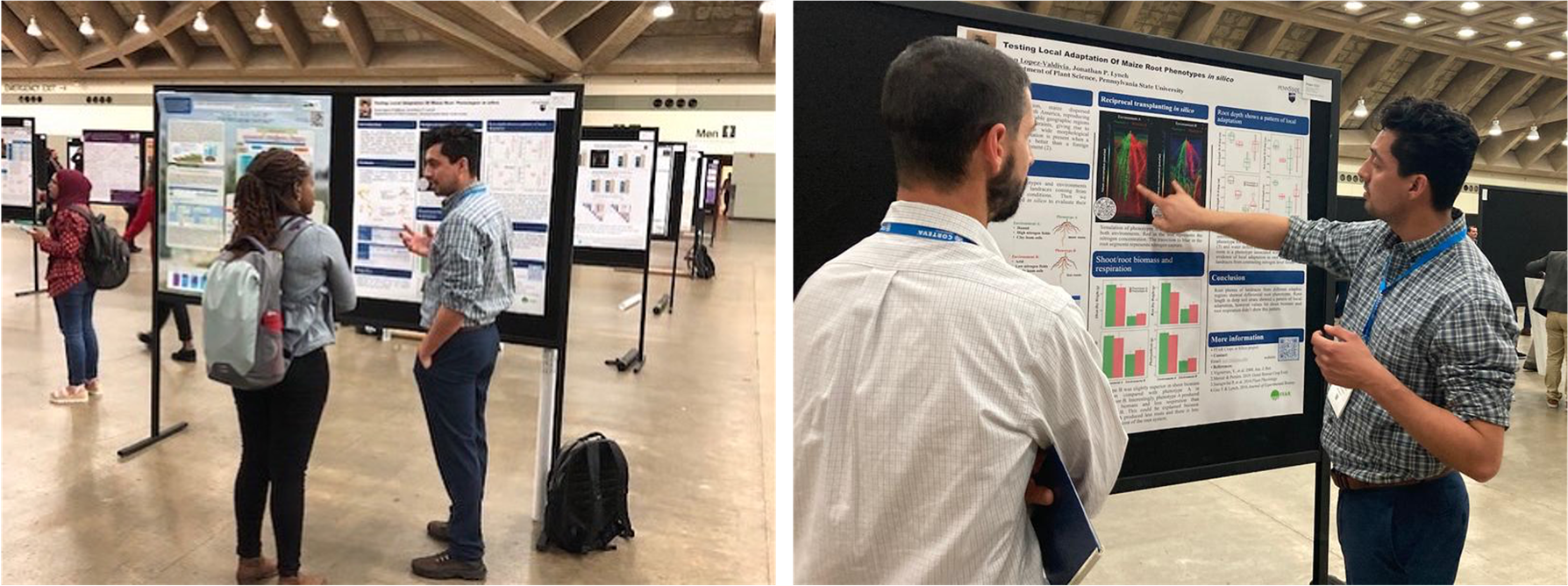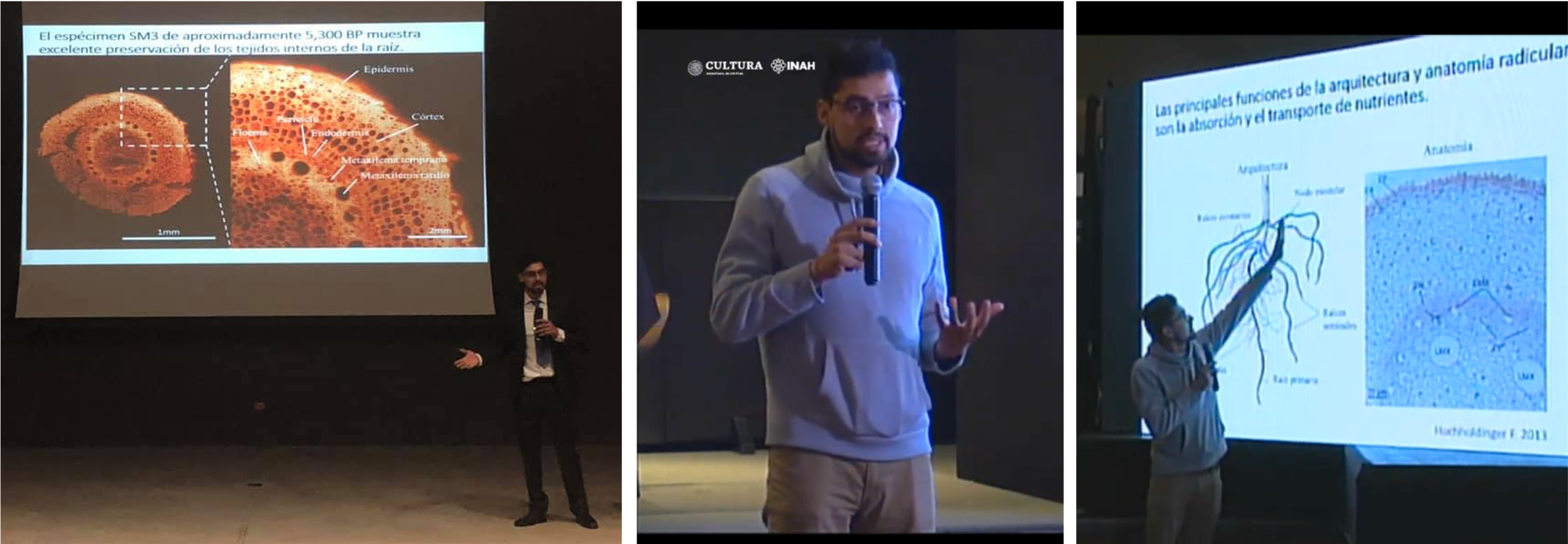Ivan Lopez-Valdivia, PhD
NEWS:
October 13, 2025 - Check out the new workshop about OpenSimRoot!
August 21, 2025 - New publication in Annals of Botany
August 18, 2025 - Penn State Press has written a news article about my PhD work on the evolution of root traits along maize domestication!
July 4, 2025 - Today Dr. Peng Yu has written a commentary article about our latest publication in New Phytologist
May 30, 2025 - Latest article in New Phytologist 🌽🌽🌽
May 17, 2025 - Check out my new AI-Podcast!! 🎙️🌱🌽
Hi there! Thank you for visiting my website!
My name is Ivan Lopez Valdivia, and I’m a postdoctoral researcher at the Leibniz Institute of Plant Genetics and Crop Plant Research, working with Prof. Hannah Schneider in the Genetics and Physiology of Root Development laboratory.
My research focuses on understanding how root systems adapt to diverse soil conditions and how crop domestication has shaped these adaptations. I’m particularly interested in:
Key Root Traits for Improved Crop Performance: I’m particularly interested in explroring the phenotypic variation of maize landraces and understanding the roles of cortical cell size, cortical cell file number, root cortical aerenchyma, and lateral root branching density in enhancing resource acquisition, especially under stress conditions like low phosphorus and low nitrogen availability.
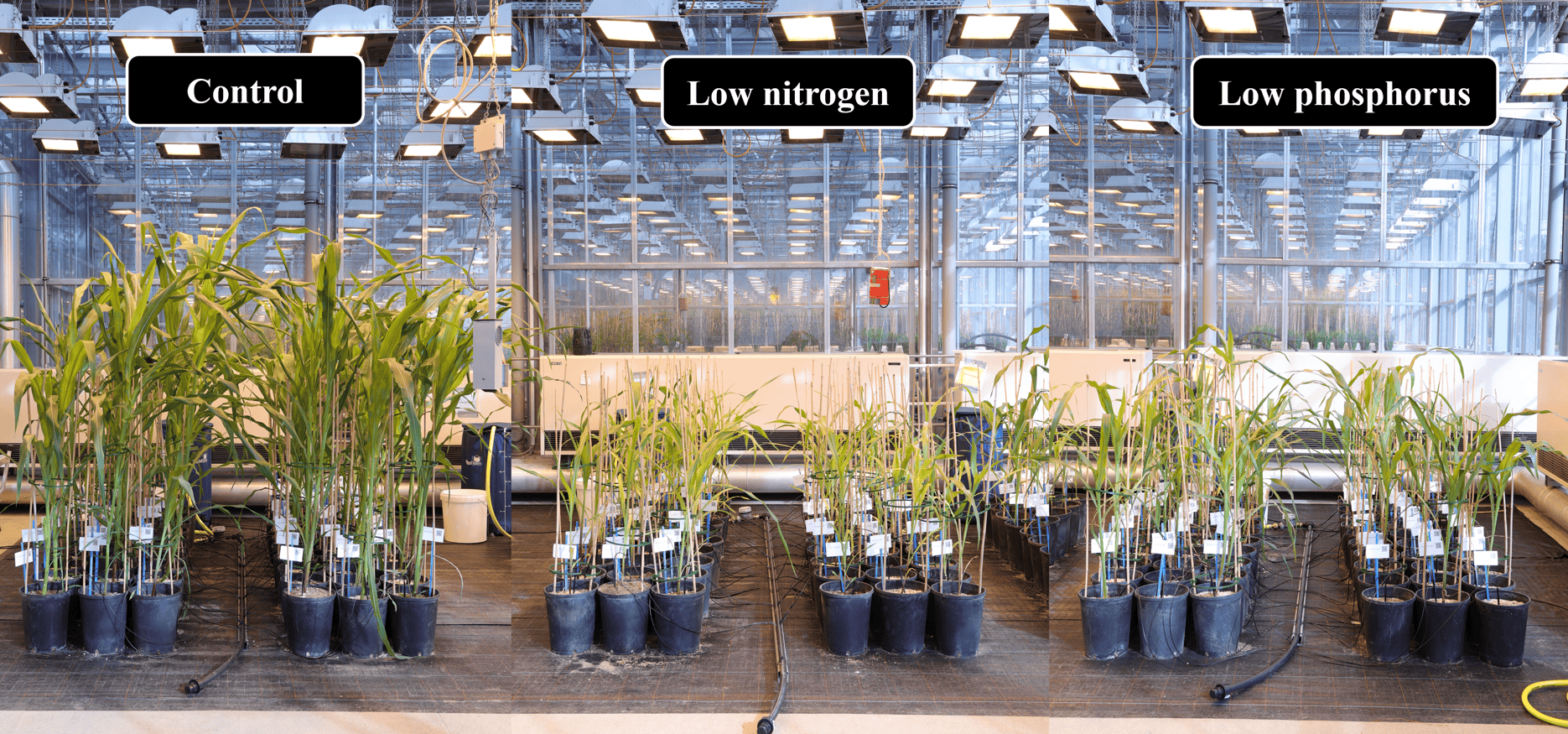
Evaluation of 20 genotypes of maize landraces
under suboptimal nitrogen and phosphorus conditions. Photo credits:
Dr. Dylan Jones
Functional-Structural Plant Modeling: I employ advanced modeling tools such as OpenSimRoot to simulate plant growth in response to environmental factors such as nutrient availability and water stress. By integrating root phenotypes into these models, I can predict how different root traits contribute to plant performance in various environments.

Simulation of maize root system growing for 40
days using OpenSimRoot. Root color represent different root
classes.
The Role of Roots in Crop Domestication: My work delves into the evolutionary history of crop root systems, with a focus on maize. By combining ancient DNA analysis, paleobotanical data, and functional-structural modeling, I investigate how domestication has altered root traits and their impact on crop adaptation to changing agricultural practices.
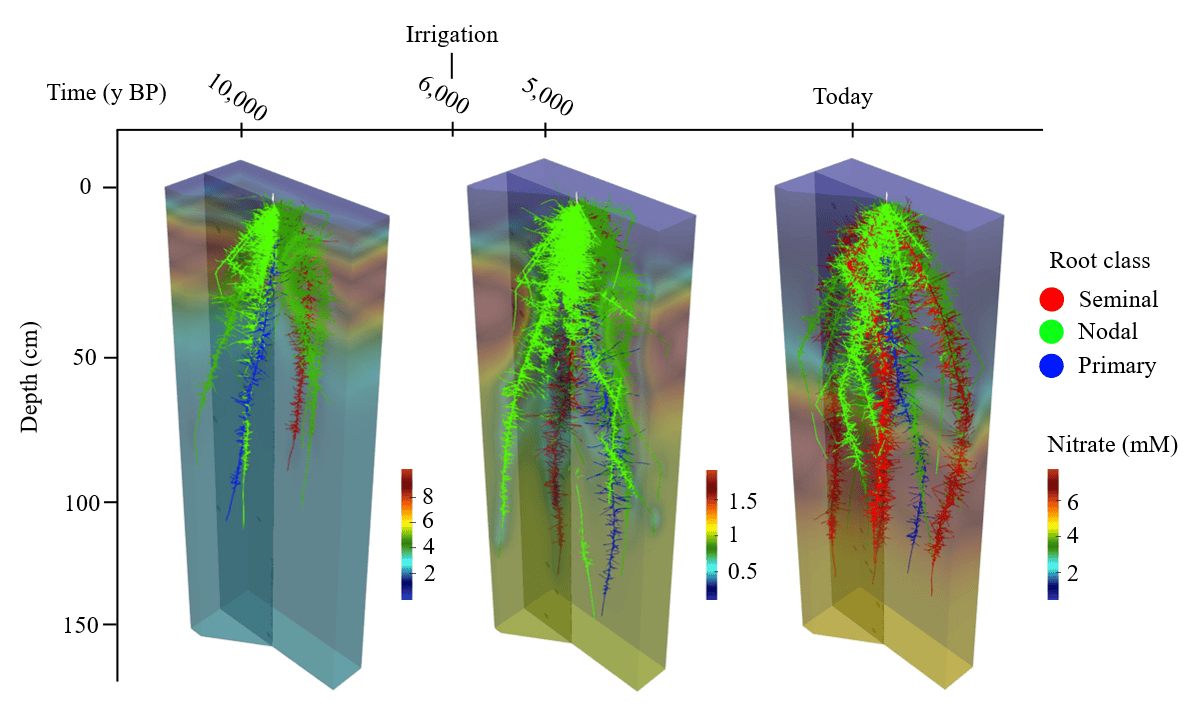 Simulations of root systems of maize in the last 10,000 years of crop domestication
Simulations of root systems of maize in the last 10,000 years of crop domestication
Publications - ORCID/Google Scholar
2025
- Ivan Lopez-Valdivia, Miguel Vallebueno-Estrada, Harini Rangarajan, Kelly Swarts, Bruce F. Benz, Michael Blake, Jagdeep Singh Sidhu, Sergio Perez-Limon, Ruairidh J. H. Sawers, Hannah Schneider, Jonathan P. Lynch. In silico analysis of the evolution of root phenotypes during maize domestication in Neolithic soils of Tehuacán, New Phytologist Full Record
- Dylan H. Jones, Kaisa Kajala, Dorota Kawa, Ivan Lopez-Valdivia, Tino Kreszies & Hannah M. Schneider (2025) The root cortex of the Poaceae: a diverse, dynamic, and dispensable tissue. Plant and Soil. Full Record
2024
- Ivan Lopez-Valdivia, Harini Rangarajan, Miguel Vallebueno-Estrada, Jonathan P. Lynch Exploring yield stability and the fitness landscape of maize landrace root phenotypes in silico. biorxiv Full Record
- Jagdeep Singh Sidhu, Ivan Lopez-Valdivia, Christopher F Strock, Hannah M Schneider, Jonathan Lynch. 2024. Cortical parenchyma wall width regulates root metabolic cost and maize performance under suboptimal water availability. Journal of Experimental Botany Full Record
2023
- Ivan Lopez-Valdivia; Xiyu Yang; Jonathan P. Lynch. 2023. Large root cortical cells and reduced cortical cell files improve growth under suboptimal nitrogen in silico. Plant Physiology, Full Record
- Miguel Vallebueno-Estrada; Guillermo G. Hernández-Robles; Eduardo González-Orozco; Ivan Lopez-Valdivia; Teresa Rosales Tham; Víctor Vásquez Sánchez; Kelly Swarts; Tom D. Dillehay; Jean-Philippe Vielle-Calzada; Rafael Montiel. 2023. Domestication and lowland adaptation of coastal preceramic maize from Paredones, Peru. eLife, Full Record
2022
- Lopez-Valdivia Ivan, Alden Perkins, Hannah Schneider, Miguel Vallebueno-Estrada, James Burridge, Eduardo González-Orozco, Aurora Montufar, Rafael Montiel, Jonathan Lynch, Jean-Philippe Vielle-Calzada. 2022. Gradual domestication of root traits in the earliest maize from Tehuacan. PNAS Vol. 119 No. 17 e2110245119 Full Record
2019
- Lopez-Valdivia Ivan (2019) Caracterización de raíces milenarias de maíz provenientes de Tehuacán: comparación con poblaciones actuales del género Zea. CINVESTAV. Mexico. Tesis de Maestria. Full Record
About me
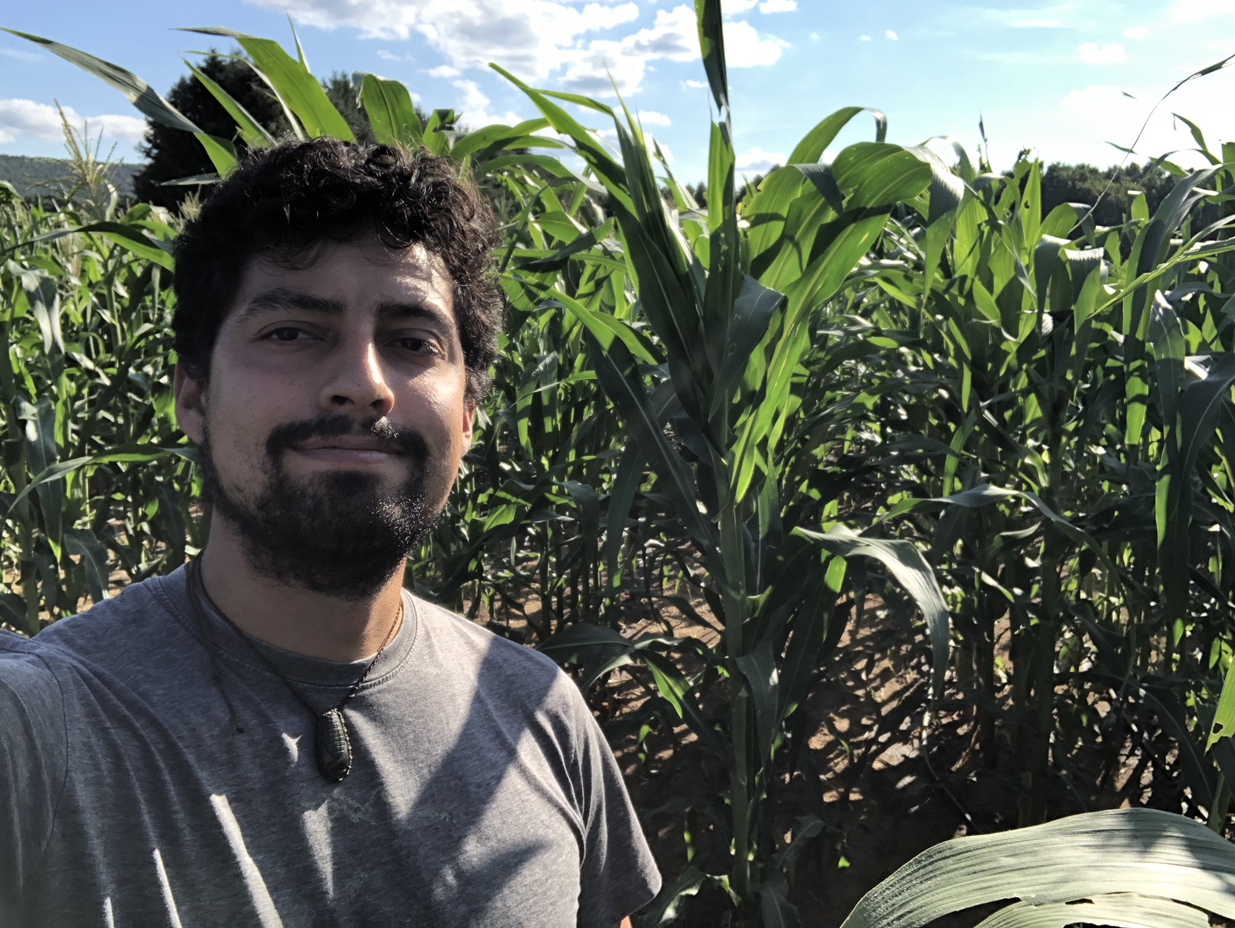
Maize fields at The Russell E. Larson
Agricultural Research Center at Rock Springs, Penn State
University
I’m a Mexican Ph.D. devoted to understanding the physiological and morphological root adaptations along the domestication and dispersion of maize and wheat. I use greenhouse, field, and modeling approaches to study the role of root anatomy, architecture, and physiology in the adaptation to abiotic stress.
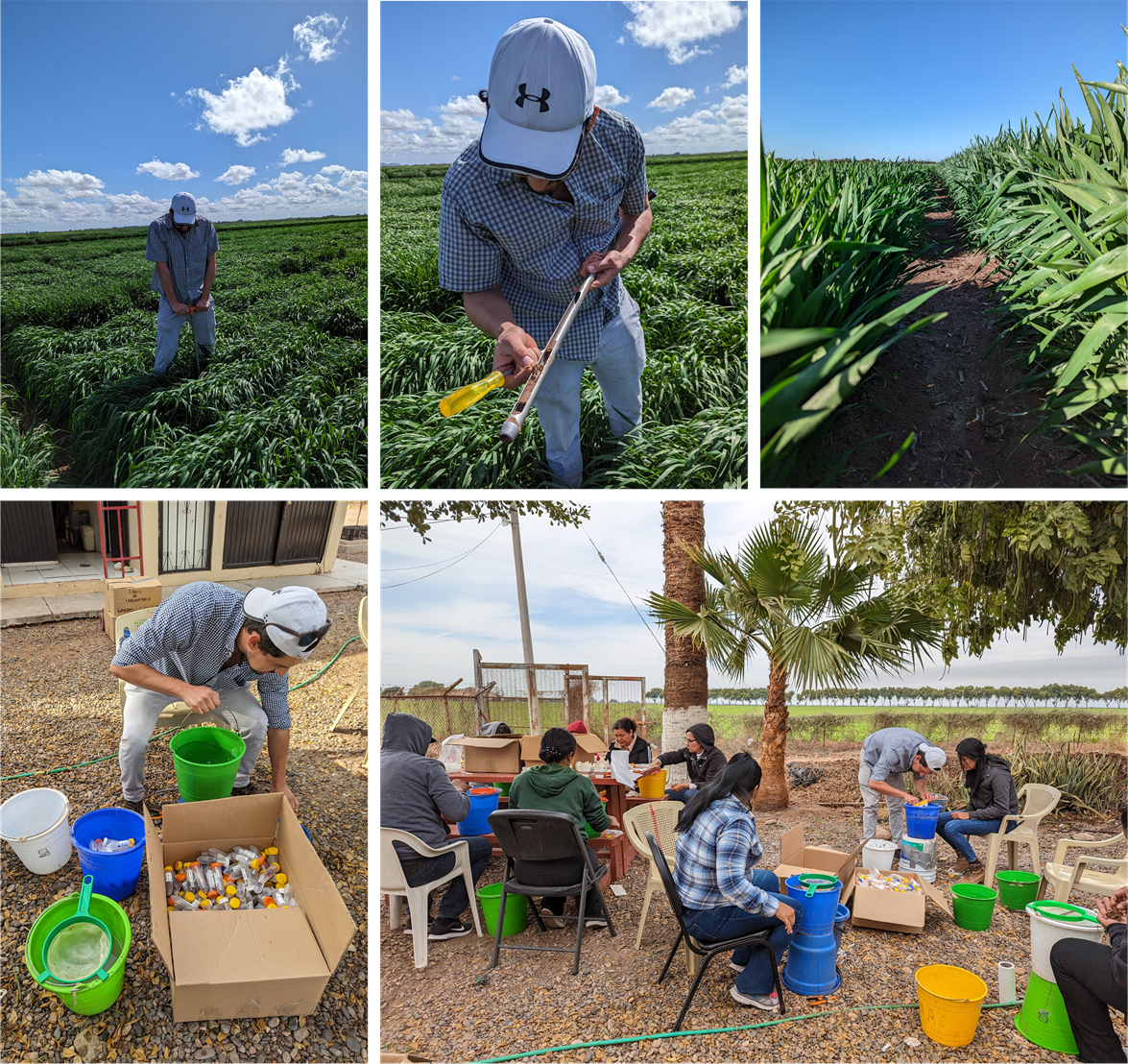
Sampling Wheat roots at CIMMYT Obregon Station
2023
